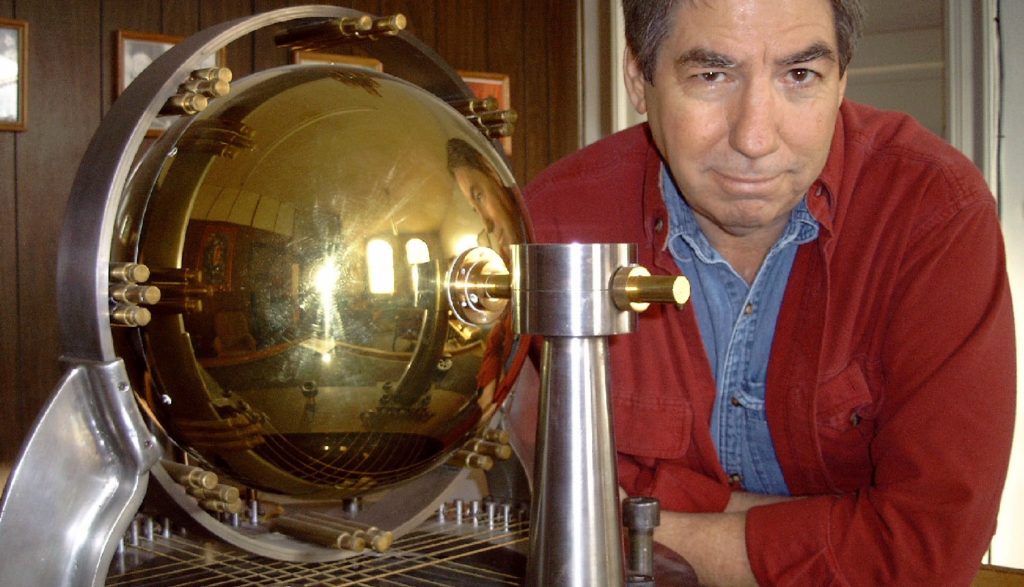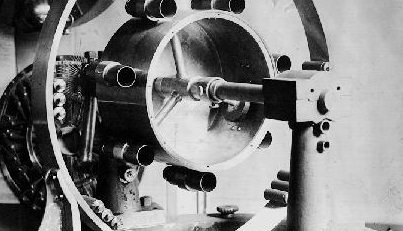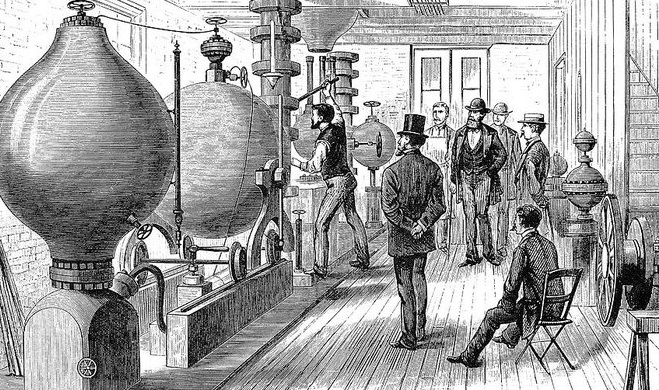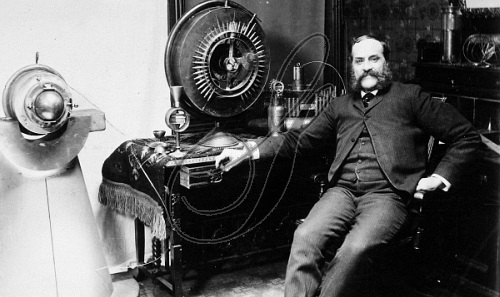John Ernst Worrell Keely was an American inventor from Philadelphia who claimed to have discovered a new motive power which was originally described as “vaporic” or “etheric” force, and later as an unnamed force based on “vibratory sympathy,” but which produced “interatomic ether” from water and air. Take a look below for 27 more interesting and strange facts about John E.W. Keely.
1. Despite numerous requests from the stockholders of the Keely Motor Company, which had been established to produce a practicable motor based on his work, he consistently refused to reveal to them the principles on which his motor operated, and also repeatedly refused demands to produce a marketable product by claiming that he needed to perform more experiments.
2. He secured substantial investments from many people, among whom was John Jacob Astor IV.
3. Born in Chester, Pennsylvania, Keely was orphaned in early childhood and was raised by his grandparents.
4. Before becoming an inventor, he worked as a member of a theatrical orchestra, a painter, a carpenter, a carnival barker, and as a mechanic.
5. In 1872, Keely invited scientists to attend a demonstration at his laboratory at 1422 North Twentieth Street Philadelphia, of a machine which he asserted was motivated by a new and hitherto unknown force.

6. Keely announced that he had discovered a principle for power production based on the musical vibrations of tuning forks and that music could resonate with atoms or with the aether.
7. Public interest was aroused and within a few months, the Keely Motor Company was formed in New York, with a capital of $5,000,000, which is the equivalent to $100 million today.
8. In the 19th century, most physicists believed, incorrectly, that all of space was filled with a medium called the “luminiferous aether”, a hypothetical substance which was thought necessary for the transmission of electromagnetic waves and to the propagation of light, which was believed to be impossible in “empty space.”
9. On November 10, 1874, Keely gave a demonstration of an “etheric generator” to a small group of people in Philadelphia.
10. Keely blew into a nozzle for half a minute, then poured five gallons of tap water into the same nozzle.
11. After some adjustments, a pressure gauge indicated pressures of 10,000 psi, which Keely said was evidence that the water had been disintegrated and a mysterious vapor had been liberated in the generator, capable of powering machinery.

12. The New York Times reported in June, 1875, that Keely’s new motive power was generated from cold water and air and evolved into a vapor, “more powerful than steam, and considerably more economical.”
13. It reported that Keely refused to disclose what the vapor was or how it was generated until he had taken out patents in, “all the countries of the globe which issue patent rights,” which was estimated would cost around $30,000.
14. Keely said that the discovery of his new energy source was accidental.
15. He said that the machine by which it was generated was called a “generator” or “multiplicator,” from where it was then passed into a “receiver” and from there to the cylinders of a steam engine.
16. In 1881, Keely met Clara Jessup Bloomfield Moore, the wealthy widow of a Philadelphia industrialist who had the year before established the Bloomfield Moore art collection.
17. She invested $100,000 plus a monthly salary of $250 so that Keely could focus completely on the perfection of his motor and widely advocated him and his work, producing many articles and books.
18. On June 6, 1885, Keely gave what he called “an exhibition” of his motor at his workshop at North Twentieth Street, Philadelphia.

19. Keely died at his home in Philadelphia from pneumonia on November 18, 1898. His will was admitted to probate on December 1, and bequeathed his entire estate of about $10,000 to his widow, Anna M. Keely, who was appointed his executor. The will made no reference to his motor.
20. Keely is buried in West Laurel Hill Cemetery in Bala Cynwyd, Pennsylvania.
21. The first meeting of the Keely Motor Company’s stockholders following his death was held on December 20, 1898. Charles S. Hill, his widow’s attorney, stated that Keely’s secret didn’t exist in manuscript form, but that Keely had suggested before his death that an inventor, Thomas Burton Kinraide of Boston, was the one man who could successfully carry on his work.
22. On January 19, 1899, The Philadelphia Press published an illustrated article detailing an investigation made by the newspaper of Keely’s workshop, in which the Press contended that the investigation had clearly proven Keely’s motor to have been “a delusion and deception” and that its alleged mysterious forces were the result of trickery.
23. The floors of Keely’s workshop were taken up and a brick wall was removed. Inside the wall, they found mechanical belts linked to a silent water motor two floors below the laboratory. In the basement, there was a three-ton sphere of compressed air that ran the machines through hidden high pressure tubes and switches.
24. A model of Keely’s engine was in the collection of the Franklin Institute in Philadelphia, and an “Etheric Force Machine” of his dating from 1878 is in the American Precision Museum in Windsor, Vermont.

25. Dale Pond’s “Was Keely A Fraud?” argued against the idea that Keely was a fraud.
26. In 2005, Jeff and Rita Behary found the original glass plate negatives of the Keely Motor taken by Thomas Burton Kinraide in his Jamaica Plain home Ravenscroft. They show the contents of the Keely Motor and are the last known photos of the motor ever taken. Kinraide discovered evidence of plain fraud within the motor but did not wish this information to be published because Keely was a close friend and he did not wish to further tarnish his name in the press.
27. Keely’s theories were featured prominently in the 1998 book “Gods of Eden” by Andrew Collins, in relation to the theoretical use of SVP-based devices as systems of levitation.




